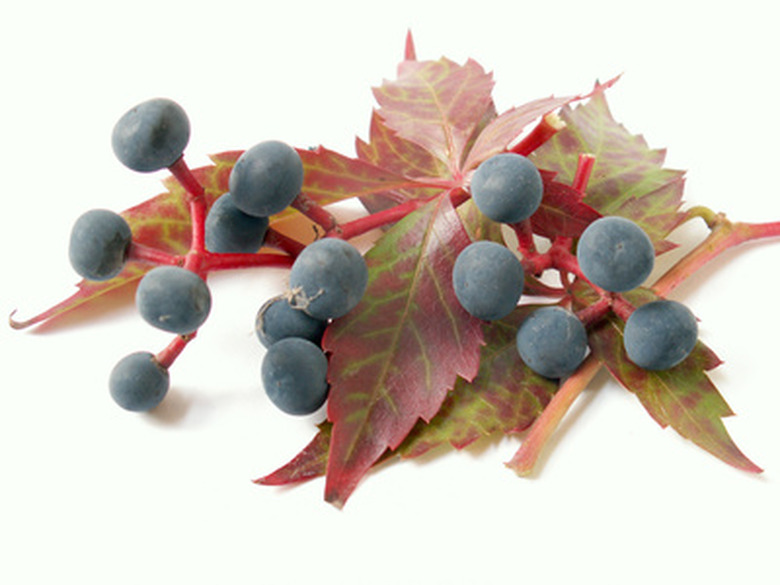The Toxicity Of Boston Ivy Berries
Boston ivy is also known as Japanese creeper and Parthenocissus tricuspidata. It originated in China and Japan. Like other members of the ivy plant family, it is a vine that often climbs buildings and trees, giving it the potential to become invasive. It has small, lobed leaves with pointed ends and grows quickly. Several varieties of Boston ivy exist; the Aurata and Atropurpurea cultivars sport reddish leaves. The berries of all varieties are toxic.
Description
Description
The flowers that Boston ivy produce are small, so you'll see berries forming on the vines without an apparent blooming phase. The berries turn dark blue when they are mature and grow in bunches that look like grapes. Each berry is round, with a diameter of about 1/3 inch. Each berry contains one to three seeds.
- Boston ivy is also known as Japanese creeper and Parthenocissus tricuspidata.
- The berries turn dark blue when they are mature and grow in bunches that look like grapes.
Toxic Berries
Toxic Berries
Boston ivy berries have oxalates, which are also contained in dieffenbachias, philodendrons, certain clovers and garden weeds called oxalis. Oxalate poisoning from plants is one of the most common forms of poisoning treated in emergency rooms of hospitals, according to Medscape.com.
Symptoms and Effects
Symptoms and Effects
Oxalates consist of needle-like crystals. When they are consumed, they first cause pain and swelling to the lips, tongue or skin. The physical effects of consuming oxalates happen quickly and can include slurred speech due to edema on the larynx. Consuming oxalates can result in kidney stones. Overdose and death are rarely reported as a result of consuming oxalates.
- Boston ivy berries have oxalates, which are also contained in dieffenbachias, philodendrons, certain clovers and garden weeds called oxalis.
- The physical effects of consuming oxalates happen quickly and can include slurred speech due to edema on the larynx.
Prevention
Prevention
The berries of Boston ivy are appealing to children and sometimes curious pets because of their color and juicy appearance. Without knowing, both people and animals can become ill if they eat these berries. The best way to prevent possible poisoning is to keep Boston ivy out of your yard. If you have a toddler or a young dog that seems to eat anything, it's better to be safe than sorry. Although the berries are colorful and look good in dried flower arrangements, avoid planting this plant in your yard if there is any chance the berries may be consumed.
Treatment
Treatment
If any of the typical symptoms of oxalate poisoning occur to a human or animal, take them to a doctor as soon as possible. Also take a few of the berries to assist the medical staff in determining if they were indeed the cause. Remove any uneaten berries from the mouth of the affected individual and make sure the airway is not blocked. If the eyes or the skin have been affected, rinse them with a large quantity of plain water. Do not induce vomiting. Most oxalate poisoning cases are mild and are sometimes treated with analgesics to help the patient feel relief from the irritation these berries can cause.
- The berries of Boston ivy are appealing to children and sometimes curious pets because of their color and juicy appearance.
- Although the berries are colorful and look good in dried flower arrangements, avoid planting this plant in your yard if there is any chance the berries may be consumed.
